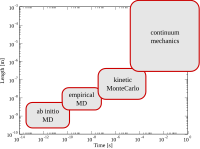Multiscale modeling

Multiscale modeling is a way of understanding really big things by breaking them down into smaller parts. Let's imagine you have a puzzle with lots of pieces. You can't put the whole puzzle together at once, so you start by putting together the corners first. This is like multiscale modeling.
In science, we use multiscale modeling to understand things like how a body works or how a chemical reaction happens. It is used to study really big things that can't be observed directly, like how a cell divides or how a virus spreads through a population.
Scientists use different levels of scale to study these big things. The levels of scale can range from the size of atoms all the way up to the size of planets. These levels can be broken down even further into smaller scales, like the molecules that make up cells or the cells that make up tissues.
By breaking things down into these smaller parts, scientists can use computer simulations and models to create a bigger picture of how things work. They can test theories and ideas, and see how these smaller parts interact with each other.
Overall, multiscale modeling helps scientists understand complex systems by breaking them down into smaller parts and examining how they work together. It's like putting together a puzzle, one piece at a time, until you can see the big picture.
In science, we use multiscale modeling to understand things like how a body works or how a chemical reaction happens. It is used to study really big things that can't be observed directly, like how a cell divides or how a virus spreads through a population.
Scientists use different levels of scale to study these big things. The levels of scale can range from the size of atoms all the way up to the size of planets. These levels can be broken down even further into smaller scales, like the molecules that make up cells or the cells that make up tissues.
By breaking things down into these smaller parts, scientists can use computer simulations and models to create a bigger picture of how things work. They can test theories and ideas, and see how these smaller parts interact with each other.
Overall, multiscale modeling helps scientists understand complex systems by breaking them down into smaller parts and examining how they work together. It's like putting together a puzzle, one piece at a time, until you can see the big picture.
Related topics others have asked about:
